Fairlight Strael 3.0 review - modern, versatile steel road bike with a sublime ride
Ready to adapt to varying roles across different seasons, this wonderfully comfortable bike delivers everything you need and is packed with fine detail

For reasons of objectivity I’ve tried to poke a few holes in the seemingly impenetrable design and ride quality of the Strael. It’s been a thankless task. With much reflection it's still hard to imagine where it could be improved; as a modern steel road bike it delivers all I need. It’s lively enough, insanely comfortable and ready to adapt to varying roles across different seasons. At £3,099 for the Ultegra build reviewed here, it represents good value and could last a lifetime if properly looked after.
-
+
Well-balanced ride quality, both responsive and comfy
-
+
High-quality workmanship
-
+
Equipped for four-season riding with plenty of tyre clearance and mounts
-
+
Broad range of sizes
-
-
Nothing - even the colour choices of orange, deep grey and putty should ensure nearly everyone is happy
You can trust Cycling Weekly.
Fairlight is an independent UK brand that has gained a reputation for making some of the best steel road bikes for British riding conditions. Its range is small, and focused. There’s a gravel bike, an adventure bike and of course a road bike, the Strael.
As the name implies the Strael 3.0 is the third iteration of the brand’s four-season road bike, designed to be versatile enough to ride year round across a range of disciplines.
Fairlight Strael 3.0: construction
While a four-season road bike makes sense for riders in many countries around the globe, it’s a quintessentially British creation. There’s a long history on this island of riding your road bike in fair weather and foul; a club run on muddy lanes, a 300km Audax fuelled by cream teas, a pub lunch and a pasty from the garage, with a serving of wind and rain for good measure or a LEJOG attempt for charity or simply for the hell of it. Fresh out the box the Strael 3.0 looks like it could handle all of these with aplomb.
It’s immediately apparent that this is no retro steel bike. The frame’s geometry and tube shapes are distinctly modern. There’s also a full carbon fork, thru-axles and flat mount disc brakes, all in keeping with this forward-thinking design.
There are still nods to tradition in the shape of a 68mm threaded bottom bracket and a 27.2mm seatpost, as you’d expect to see on a steel frame. But even these standards have been adopted of late on carbon framesets looking to improve serviceability and compliance.
Fittingly, Fairlight builds all its frames using Reynolds steel tubing, which is still produced in its Birmingham factory. For the Strael 3.0 it uses a combination of 853 and 725 tubes, all custom made for the brand. And it’s these tube profiles that really catch the eye.
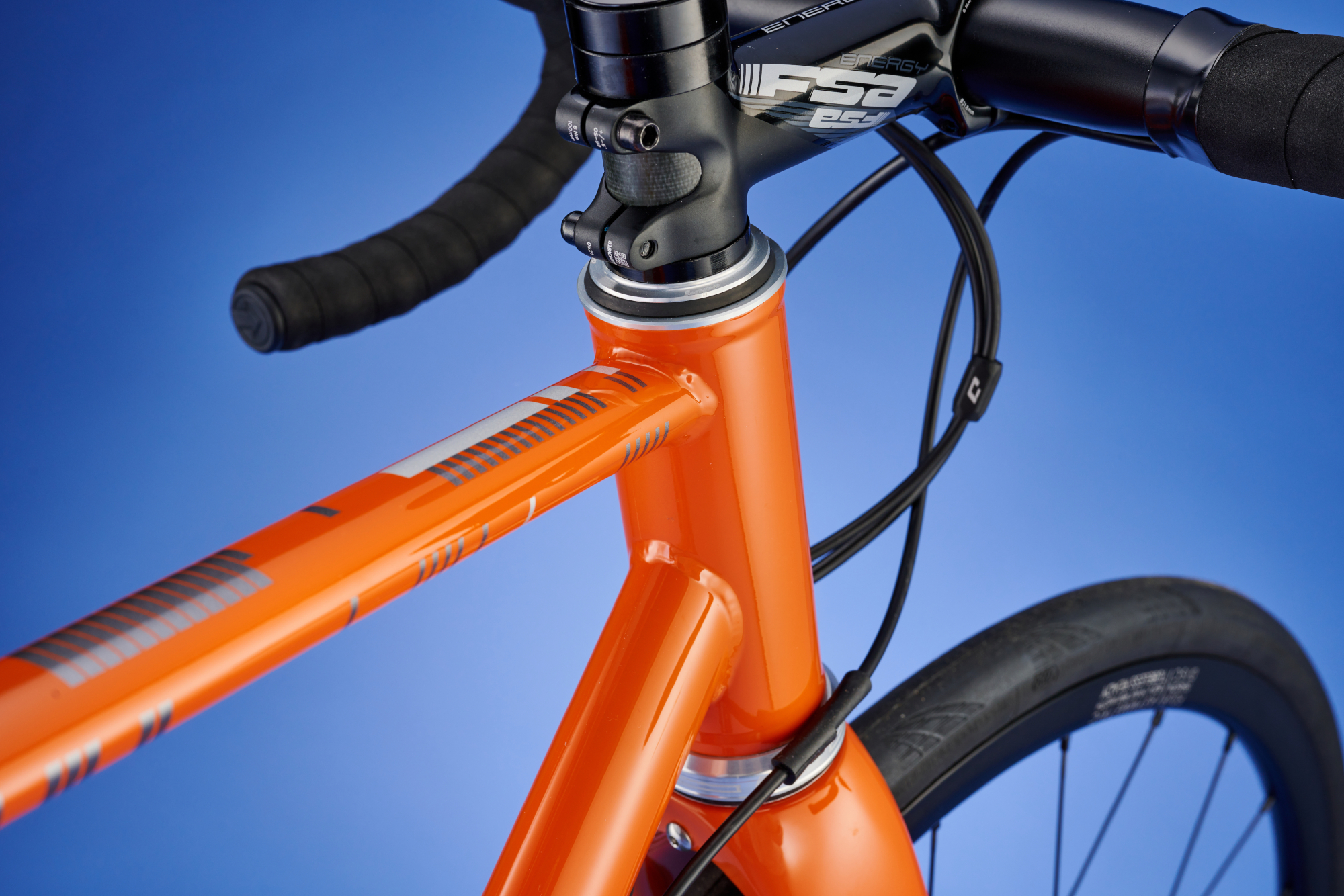
Steel tubing of the Fairlight Strael 3.0
Fairlight says it took two years to develop the new Strael, with the revised tubing at the heart of the bike’s redesign. The triple-butted top tube, made from Reynolds 853, is distinctive: it’s fully ovalised, which Fairlight says is a “critical” component in its desire to deliver a comfortable ride. Effectively the slimline tube, which has a centre section wall thickness of just 0.4mm, is designed to flex under load.
The down tube is ovalised at each end, as was the case with the Strael 2.0, but the butting profile has changed with the wall thickness reduced in the middle to allow it to be increased at each end near the welds to add strength. The result, Fairlight says, is within 20g of the previous tube’s weight.
But it’s the chainstays which garner the most attention. Made using Reynolds 725 tubing Fairlight says they are quite unlike anything you’re likely to have seen on a steel bike. And I think it's right. Flat, wide and curved they’re elegant and intriguing - and vastly different from those on the Strael 2.0. Fairlight states that they are created to aid power transfer and comfort, with the added width better able to resist pedalling forces. The chainstays also allow for wider tyre clearances. The Strael 3.0 can fit 36mm tyres (measured), which furthers its four-season credentials and aligns the frame nicely with road cycling’s continued shift to wider tyres run at lower pressures.
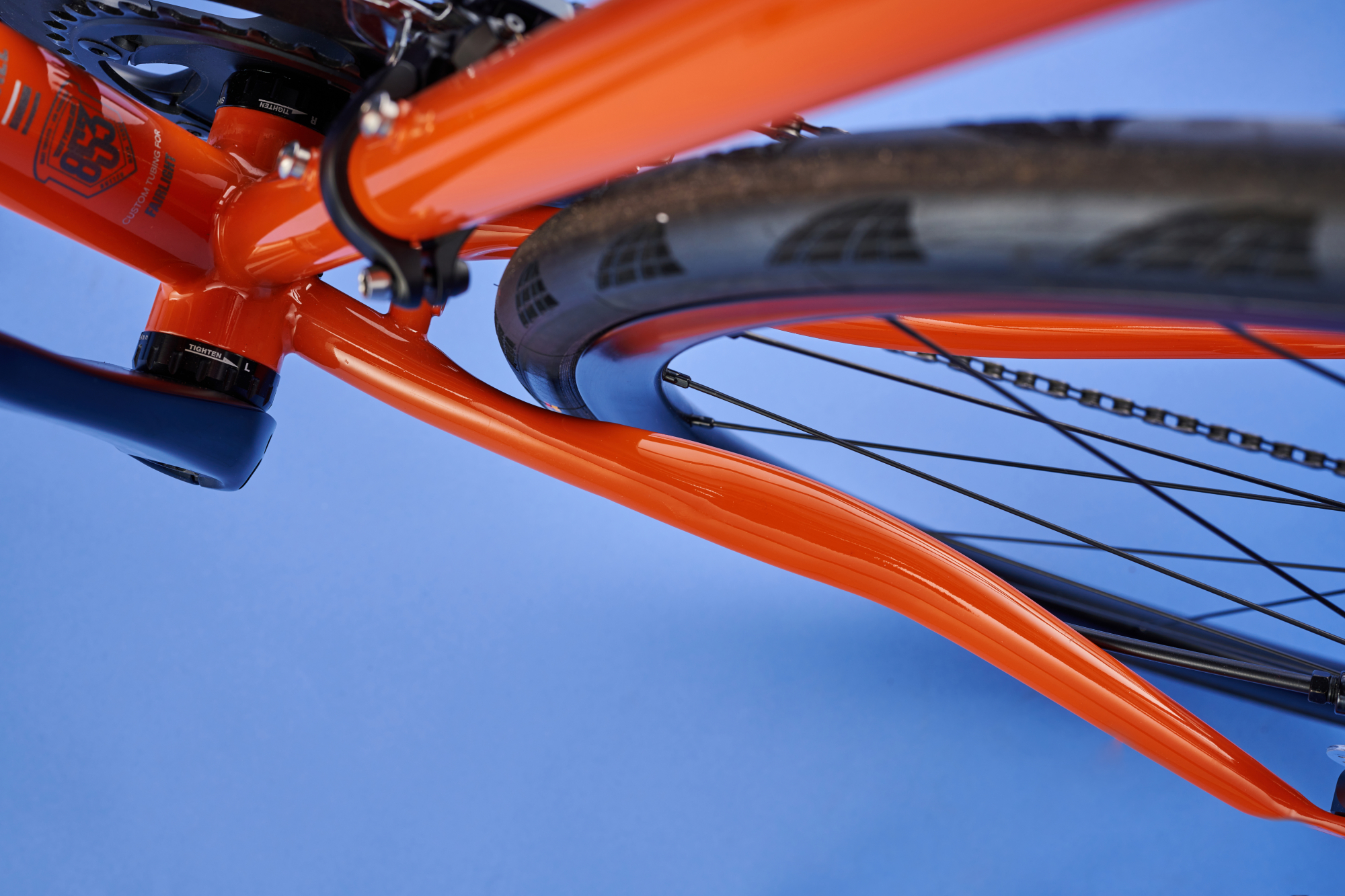
Reynolds 725 chainstays of the Fairlight Strael 3.0
Follow the stays and you soon reach another of the Strael’s standout design elements, the rear dropouts. Not normally an area of great interest, here they’re made in partnership with Bentley Components with the axle housing and disc mount on the non-drive side and the housing and the hanger on the drive side made from a single piece of aluminium that’s removable and replaceable. There's also a stainless steel plate that acts as both a washer for the mechanical fixings of the inserts to the frame and as protection for the mudguard and rear rack eyelets, which can often lose paint during the fitting of both add-ons.
It’s fair to say the impressive workmanship and attention to detail of the Mk.II dropouts are mirrored throughout the Strael. Every area of the bike seemingly has a clear purpose, which is then beautifully executed.
A few added details completes the Strael’s thoughtful design: mounts for mudguards, a rear bike pannier rack and an extra bottle cage on the underside of the down tube, a modular cable guide system that works across mechanical groupsets as well as Shimano Di2 and SRAM eTap, and internal routing for a dynamo light on the carbon Anraed 3.0 forks.
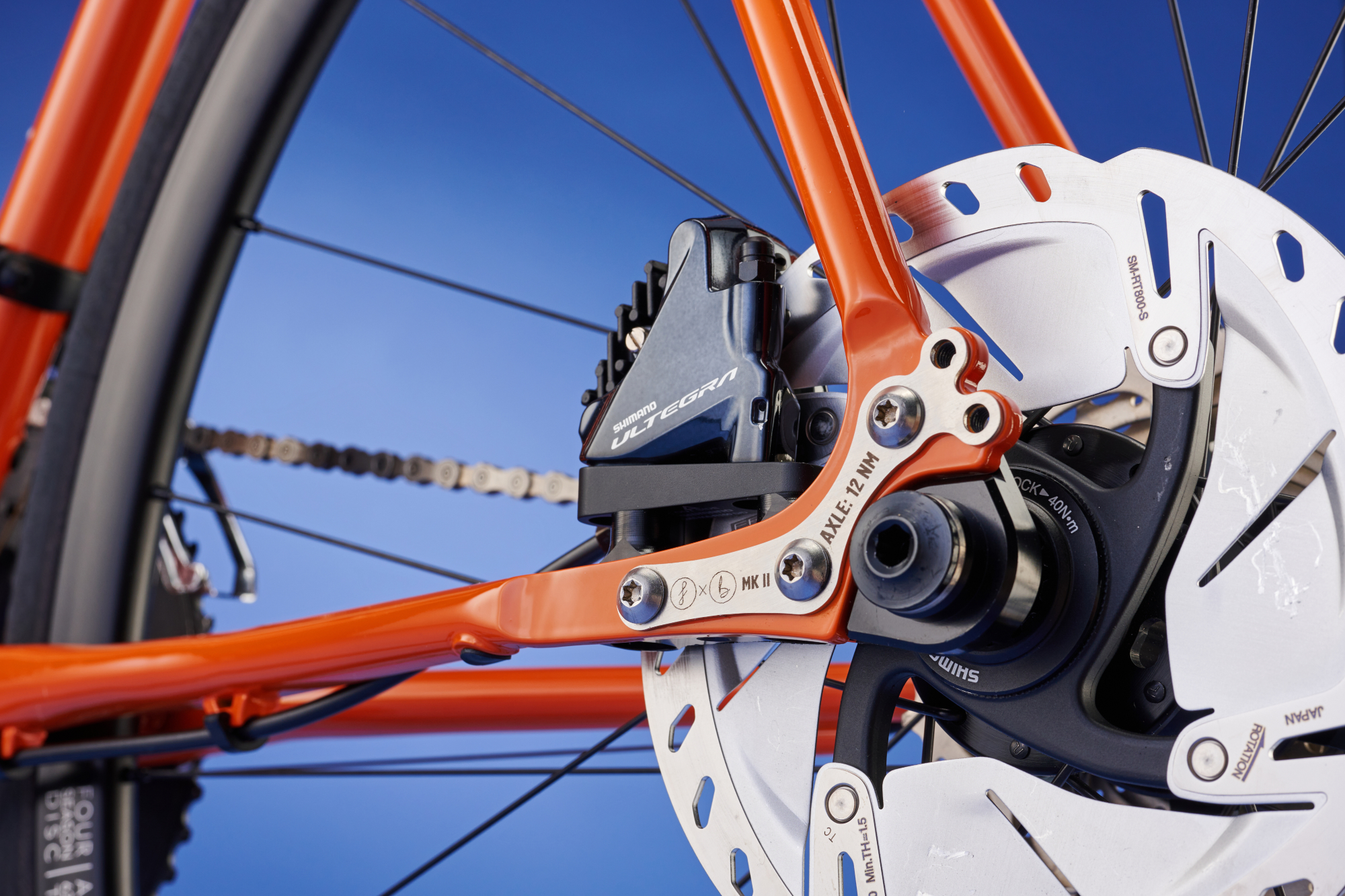
The rear dropouts of the Fairlight Strael 3.0
The Strael’s geometry is equally considered. Each frame size is offered in both a ‘regular’ and a ‘tall’. It’s what Fairlight calls ‘proportional geometry’ and in essence gives the option of a lower and longer frame for a racier position (regular) or higher and shorter frame for more upright position (tall) as well as better accommodating riders with shorter legs and longer back or longer legs with a shorter back.
I rode a 54R. The numbers are pretty much in keeping with what you’d expect from a bike that’s created to be functional yet fast. The stack height is 551mm with a reach of 386mm, which should equate to a comfortable riding position without being too upright and pedestrian. The head tube angle is 72.5 degrees, which is pretty typical for a modern yet non-race road bike in this frame size, while the 418mm long chainstays hint at a stable ride.
The claimed weight of the Strael frame and forks in this 54T size is 2.6kg, which includes all the trimmings, such as the headset and thru-axles. The full build, which features an 11-speed Shimano Ultegra groupset, Hunt Four Season Disc wheels with 28mm Continental GP 5000s and FSA aluminium finishing kit, weighs 8.8kg.
Fairlight Strael 3.0: the ride
There’s something satisfying about using any product that’s fit for purpose. And the Strael 3.0 is exactly that. It felt so at home on the English roads I currently ride on, as if it had ridden each stretch many times before. It absorbed the lumps and the bumps. It glided happily over smooth sections, all the time filtering the feedback from the road to keep me relaxed but still engaged. Subsequently, I began to feel entirely at home in its company, like reacquainting with an old friend, where a repartee is quickly established no matter the length of time passed between meetings.
The bike’s geometry suggested that it would be adaptable and, on the road, the Strael strikes an ideal balance. It’s dependable in its handling yet still feels nimble enough. Rolling along it’s eminently comfortable, which is not unexpected for a high quality steel bike that’s been designed to excel across all four seasons; the oval top tube appearing to make good on its promise. However, its turn of speed was just as impressive. I’m no sprinter but the bike responded quickly as I got out the saddle and began to accelerate. There was no discernible ‘over flexing’, rather an efficient transfer of power through the pedals. And once up to speed the Strael seemed happy to stay there.
It was on longer rides when the Strael really came into its own. On a route of 50 or so miles, which took in both smooth and poorly surfaced A and B roads, a few hills, farm lanes and an off-road cycle track, it was nothing short of a joy to ride.
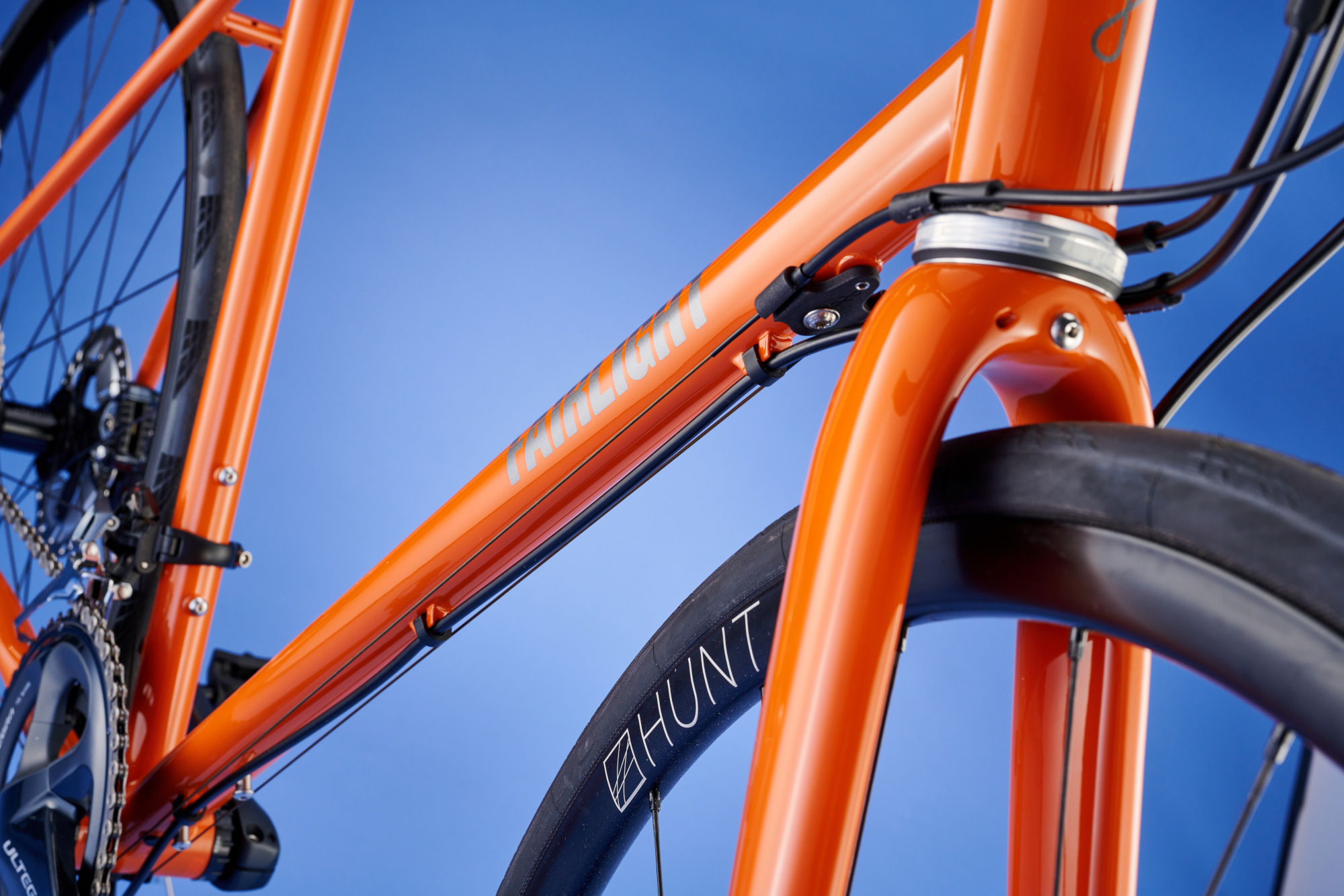
The external cable routing on the Fairlight Strael 3.0
Its performance also hinted at the bike’s long term versatility. The smooth and cushioned ride across varied surfaces, some of them decidedly dodgy, would be invaluable on far longer rides or across multi-day tours. Its ability to get up to speed quickly and then maintain it means the Strael wouldn’t be left wanting on a fast club ride. Likewise it climbs and descends impressively. A steel bike such as this isn’t likely to fly up hills compared to a lightweight carbon bike but importantly the Strael felt solid here not flexy, leaving me with the feeling that the energy I was using was never being wasted. Going downhill it was well-behaved, holding its line with real assurance. I’ve always felt like steel bikes descend well and the Strael is no exception.
In essence, it excelled across the board, with a connectivity to the road that inspires confidence, whether you’re cruising along or looking to put the hammer down.
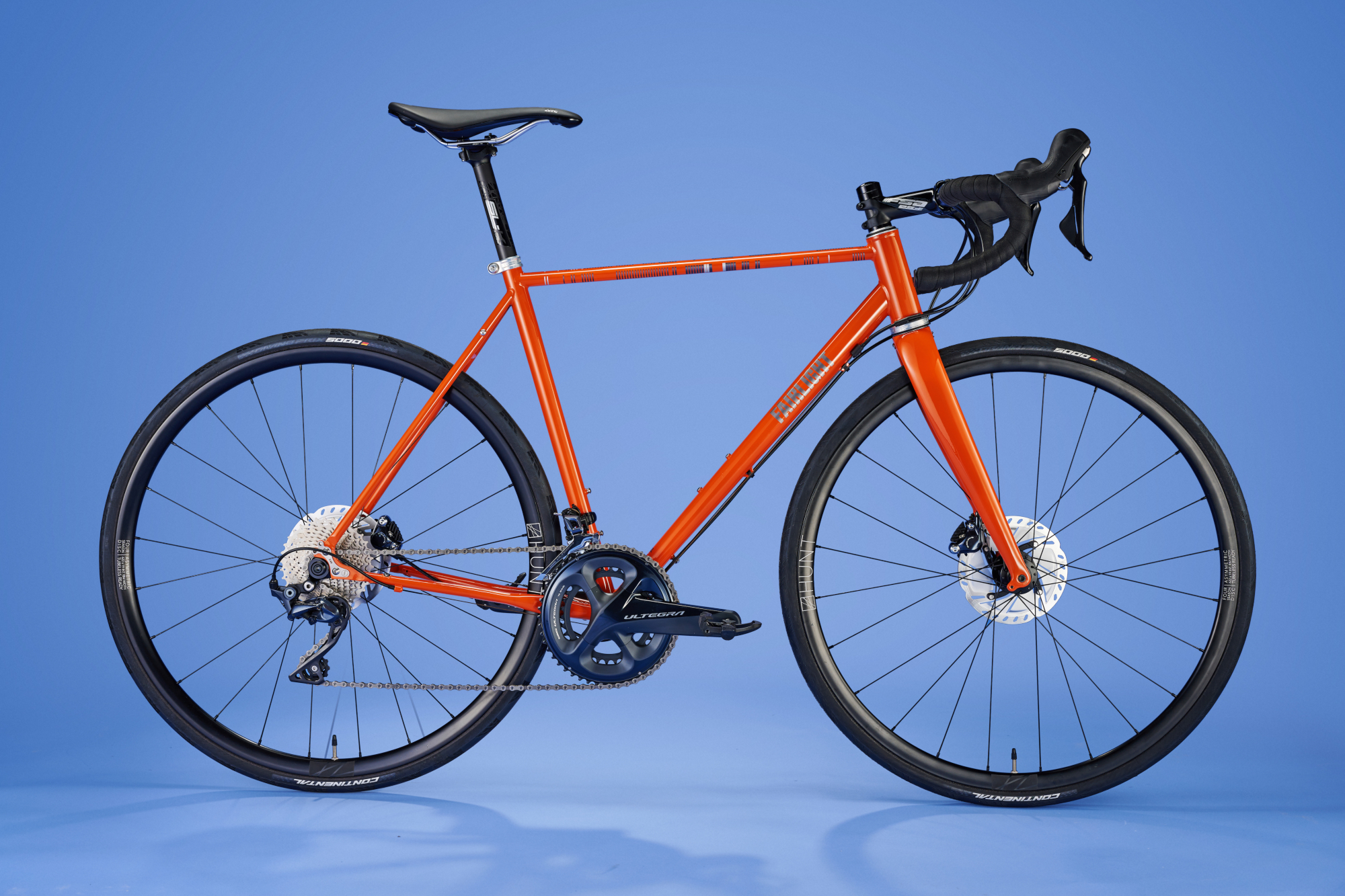
Side on view of the Fairlight Strael 3.0 steel road bike
Fairlight Strael 3.0: value and conlcusion
The Strael 3.0 frameset costs £1,399. In comparison Mason’s 4-season steel road frame, the Resolution, costs £1,599, and is made using Columbus Spirit and Life tubing. Like the Strael it has plenty of clearance for high volume tyres as well as bosses for mudguards and a rear rack. Condor’s Fratello Disc frameset, which is again equipped to handle riding across the seasons, costs £1,299.99.
Fairlight also offers a number of complete build options. The Ultegra-equipped Strael reviewed here will set you back £3,099. It's a considerable amount of money of course, but one that represents value too. You're getting a superbly built steel frame that could last you a lifetime if you so wish. On top of that you'll benefit from components that are are too built to last, namely a reliable and high-performing groupset and a lightweight and serviceable pair of wheels.
For reasons of objectivity I’ve been trying to poke holes in the seemingly impenetrable design and ride quality of the Strael. It’s been a thankless task. With much reflection it's still hard to imagine where it could be improved; as a modern steel road bike it delivers all I could need or want. It’s lively enough, insanely comfy and ready to adapt to varying roles across different seasons. Certainly a bike for the long haul. Quite possibly one for the ages too.
Fairlight Strael 3.0: specs
- Frame: Fairlight Strael 3.0
- Fork: Fairlight Anraed 3.0 carbon
- Groupset: Shimano Ultegra R8000
- Wheels: Hunt 4 Season Disc
- Bar: FSA Gossamer Compact
- Stem: FSA Energy
- Seatpost: FSA Sl-K Carbon 27.2mm
- Saddle: Fabric Scoop Shallow Elite
- Weight: 8.8kg
- Size tested: 54R
- Contact: fairlightcycles.com

Thank you for reading 20 articles this month* Join now for unlimited access
Enjoy your first month for just £1 / $1 / €1
*Read 5 free articles per month without a subscription

Join now for unlimited access
Try first month for just £1 / $1 / €1
Get The Leadout Newsletter
The latest race content, interviews, features, reviews and expert buying guides, direct to your inbox!
Luke Friend has worked as a writer, editor and copywriter for twenty five years. Across books, magazines and websites, he's covered a broad range of topics for a range of clients including Major League Baseball, the National Trust and the NHS. He has an MA in Professional Writing from Falmouth University and is a qualified bicycle mechanic. He has been a cycling enthusiast from an early age, partly due to watching the Tour de France on TV. He's a keen follower of bike racing to this day as well as a regular road and gravel rider.
-
 Man hands himself in to Belgian police after throwing full water bottle at Mathieu van der Poel during Paris-Roubaix
Man hands himself in to Belgian police after throwing full water bottle at Mathieu van der Poel during Paris-Roubaix30-year-old was on Templeuve-en-Pévèle cobbled sector when television pictures showed the bottle hitting him in the face
By Tom Thewlis Published
-
 'I'll take a top 10, that's alright in the end' - Fred Wright finishes best of British at Paris-Roubaix
'I'll take a top 10, that's alright in the end' - Fred Wright finishes best of British at Paris-RoubaixBahrain-Victorious rider came back from a mechanical on the Arenberg to place ninth
By Adam Becket Published
-
 'This is the furthest ride I've actually ever done' - Matthew Brennan lights up Paris-Roubaix at 19 years old
'This is the furthest ride I've actually ever done' - Matthew Brennan lights up Paris-Roubaix at 19 years oldThe day's youngest rider reflects on 'killer' Monument debut
By Tom Davidson Published